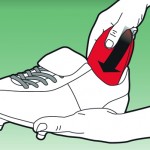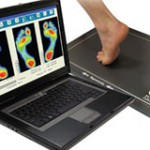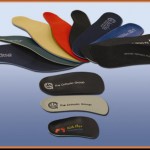Shoulder Problems: A Pain in the neck
by Olivia O’ Leary D.C BSc Hons
An aching shoulder may not signal a shoulder problem. And a sore neck may not indicate a neck problem.
When the chiropractors at Gorey Family Chiropractic were asked about neck and shoulder symptoms amongst clients on presentation to the clinic one thing quickly became clear. People may come in with shoulder pain when they really have a neck problem and similarly, neck pain can mask a shoulder problem.
SO WHERE DOES THE PAIN COME FROM?
“The way the body reports pain is somewhat unreliable,” explained Michael Veal D.C Clinic Director “Neck pain and shoulder pain so commonly overlap that it becomes difficult to distinguish for a patient where the pain is actually coming from.
WHY DOES THIS HAPPEN?
Because the neck and shoulder are intimately connected by multiple nerve pathways. When injury occurs, the brain can’t always trace pain pathways back to their source, and what we feel may not be what is really going on. “This is known as ‘referred pain”.
WHEN THE SHOULDER IS THE USUAL SUSPECT

Shoulder pain is most often caused by an injury to the rotator cuff, a group of tendons and muscles that stabilize the joint. The rotator cuff develops wear and tear with age, and can be easily injured which can cause shoulder tendonitis or even a partial tear of a shoulder tendon.
This may cause both shoulder pain and contribute to development of neck pain.
YOU MAY HAVE A ROTATOR CUFF INJURY OR OTHER SHOULDER PROBLEM IF SHOULDER PAIN:
• Develops in the shoulder itself or on the outside of your upper arm
• Is dull and aching
• Occurs when you reach overhead or behind your back, or when lifting
• Radiates into the upper arm, but not past the elbow
• Persists at night
• Improves when you rest your arm
WHEN THE NECK IS THE LIKELY CULPRIT
 Inflammation of any of the 14 nerves or eight pairs of joints in the neck can cause neck pain. The joints — or vertebrae — serve as a “hinges” allowing movement (no wonder they wear out). In fact, 65 percent of 65-year-olds have arthritis in one or more neck joints.
Inflammation of any of the 14 nerves or eight pairs of joints in the neck can cause neck pain. The joints — or vertebrae — serve as a “hinges” allowing movement (no wonder they wear out). In fact, 65 percent of 65-year-olds have arthritis in one or more neck joints.
This causes stiffness and irritation to these joints and can be another factor in the development of a pinched nerve. Fortunately chiropractic treatment and exercise has been extensively shown to restore flexibility and reduce irritation in the neck which helps reduce neck pain and can help stabilise the condition.
Because pain in one area can so often be confused with another, a thorough examination must be done first by your chiropractor or other specialist healthcare provider which includes range of motion, strength testing and provocative orthopaedic tests to the neck and shoulder. Should these tests prove positive it may be necessary to x ray ( x ray facilities on site) the neck to help rule out certain conditions or better evaluate others.
YOU MAY HAVE ARTHRITIS OR NERVE RELATED PAIN IF PAIN:

• Develops in your shoulder blade, or close to or on the side of your neck
• Is sharp, stabbing, burning or tingling
• Radiates down past your elbow or even into your hand
• Persists at rest
• Occurs when you extend your arms or twist them inward
• Is relieved when you support your neck
Luckily most neck and shoulder pain can recover with conservative care. Evidence based guidelines for the management of neck pain and shoulder pain commonly recommend conservative measures first like chiropractic care, exercises and rehabilitative exercises.
5 WAYS TO RELIEVE SHOULDER PAIN
1. Try to rest from activities that aggravate pain
2. Exercises to gently stretch and then ultimately strengthen have been shown to be of benefit.
3. Ice your shoulder, an ice pack should be applied for 10-15 mins wrapped in thin tea towel to prevent an ice burn.
4. If you are failing to recover from your shoulder pain or your shoulder pain is more severe our clinical team holds extensive experience in the treatment and management of shoulder pain and will guide your recovery or refer your case if treatment is deemed unsuitable for your problem.
5. Anti inflammatory medications are sometimes beneficial in the first instance but their usage is not recommended to mask or avoid treating the cause of the underlying shoulder pain.
6. If these measures fail to bring relief, you may need an MRI of your shoulder. If that shows a torn rotator cuff, then shoulder surgery can sometimes be necessary.
DIAGNOSED WITH A NECK PROBLEM CAUSING NECK PAIN
Should a physical examination by your chiropractor, which may include orthopaedic, neurological or x ray studies indicate a trapped or irritated nerve or arthritis in your neck, research and evidence based guidelines have shown chiropractic treatment to be beneficial which may include spinal manipulation, soft tissue treatment techniques, muscular stretching as well as addressing causative factors such as poor ergonomics & posture.
5 WAYS TO SELF HELP NECK PAIN
- Remember good posture; a significant proportion of neck and shoulder pain develops from postural strain
- Stretching & strengthening exercises: neck stiffness and weakness leave the neck vulnerable to injury
- Ice & heat ( ice in acute stages, heat when a problem is more chronic)
- Ergonomic modifications in your workplace may be necessary to address the causes of neck pain if occupational strain exists
- An orthopaedic pillow whilst sometimes a little difficult to get used, to maintains and supports the natural curve of the spine whilst sleeping which is especially important with a damaged neck.
 Whether you have chronic pain in your shoulder, your neck or both, don’t wait to see an expert.
Whether you have chronic pain in your shoulder, your neck or both, don’t wait to see an expert.
“Having a chiropractor or other specialist evaluate your complaint will determine quickly where the main problem is and will get you started on the correct treatment,” says Dr. Veal.
GOREY FAMILY CHIROPRACTIC SUPPORTING YOUR RECOVERY AND MAINTAINING IT
If the source of your pain is difficult to pinpoint, our specialist Clinical team are trained and hold extensive experience in the diagnosis, treatment and management of neck pain and shoulder pain. With onsite x ray facilities in Gorey and quick referral available for MRI your problem can be thoroughly evaluated should it be deemed necessary.
For your convenience all of our Gorey Family Chiropractic team are registered with VHI, Glo, Aviva and Laya Healthcare allowing clients claim reimbursement from a wide range of private healthcare Insurance providers. We also provide care under the GAA injury scheme.
Opening hours Mon 8-7, Tues 9-5, Wed 8-7, Thurs 9-5, Frid 8-7
Tel: 053 94 83338 or alternatively email info@chiropractor.ie






































